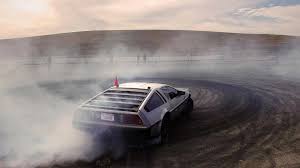
Breaking News
 Wash Post Editorial Board Turns Against Climate Agenda?!
Wash Post Editorial Board Turns Against Climate Agenda?!
 One Year Ago I Predicted and Described in Detail Huge Mars AI Plans that Elon Musk Confirmed...
One Year Ago I Predicted and Described in Detail Huge Mars AI Plans that Elon Musk Confirmed...
 British Teachers To "Spot Misogyny" In Boys And Target Them For Reeducation
British Teachers To "Spot Misogyny" In Boys And Target Them For Reeducation
 Democrats Refuse To Release Post-Mortem Of 2024 Election Loss, DNC Chair Says
Democrats Refuse To Release Post-Mortem Of 2024 Election Loss, DNC Chair Says
Top Tech News
 This tiny dev board is packed with features for ambitious makers
This tiny dev board is packed with features for ambitious makers
 Scientists Discover Gel to Regrow Tooth Enamel
Scientists Discover Gel to Regrow Tooth Enamel
 Vitamin C and Dandelion Root Killing Cancer Cells -- as Former CDC Director Calls for COVID-19...
Vitamin C and Dandelion Root Killing Cancer Cells -- as Former CDC Director Calls for COVID-19...
 Galactic Brain: US firm plans space-based data centers, power grid to challenge China
Galactic Brain: US firm plans space-based data centers, power grid to challenge China
 A microbial cleanup for glyphosate just earned a patent. Here's why that matters
A microbial cleanup for glyphosate just earned a patent. Here's why that matters
 Japan Breaks Internet Speed Record with 5 Million Times Faster Data Transfer
Japan Breaks Internet Speed Record with 5 Million Times Faster Data Transfer
 Advanced Propulsion Resources Part 1 of 2
Advanced Propulsion Resources Part 1 of 2
 PulsarFusion a forward-thinking UK aerospace company, is pushing the boundaries of space travel...
PulsarFusion a forward-thinking UK aerospace company, is pushing the boundaries of space travel...
 Dinky little laser box throws big-screen entertainment from inches away
Dinky little laser box throws big-screen entertainment from inches away
 'World's first' sodium-ion flashlight shines bright even at -40 ºF
'World's first' sodium-ion flashlight shines bright even at -40 ºF
Meet Marty, The Electric Autonomous DMC DeLorean That Drifts By Itself

Will autonomous cars ever be as competent as human drivers? That is the most pressing question about self-driving technology. Because of Jonathan Goh and Chris Gerdes, from Stanford's Dynamic Design Lab, we'll have an entirely opposite question to make: will humans ever be as competent as this autonomous electric car? It is way more than that, to be honest. It's a 1981 DMC DeLorean with two electric motors on the rear axle that is called the Multiple Actuator Research Testbed for Yaw control. Marty, for short.
This car is fantastic for much more than the clever name, a tribute to Michael J. Fox's character in the "Back To The Future" trilogy. It also goes sideways as if it was not a huge challenge. If some cars offer a drift mode, such as the Ford Focus RS, there will be a time in which this mode will include the vehicle doing the whole process for the driver.
Although it may look like this, the goal of the research is not making smoke with the tires. It is to make the autonomous car able to handle difficult situations in the best way possible. Not only slippery surfaces, as Gerdes mentions in the video below, but also avoiding obstacles and other difficult situations.



